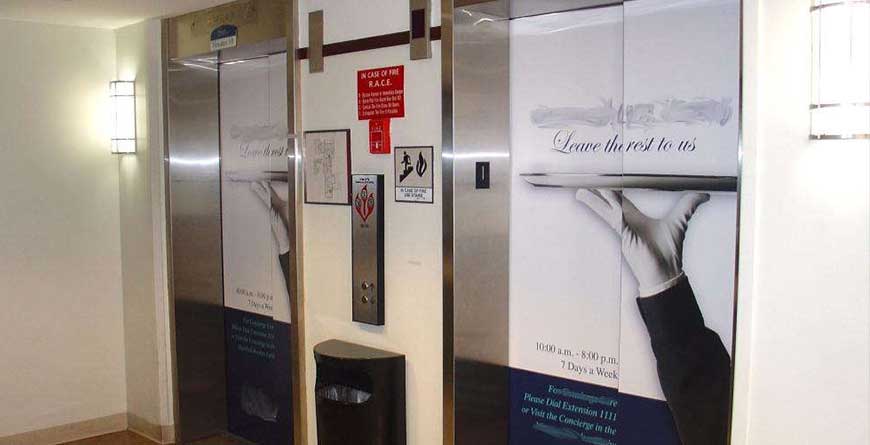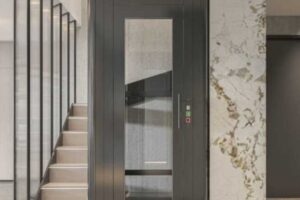
Understanding Elevator Door Cladding Regulations
What You Need to Know About Installing Decorative Films on Elevator Doors
In recent years, applying decorative films or cladding to elevator doors has become more common, often for aesthetic branding or design purposes. However, not all of these installations comply with safety codes, particularly regarding fire resistance and smoke spread. Improperly applied materials can create hazards, making it crucial for building owners, property managers, and contractors to follow regulatory requirements.
This article breaks down the key rules around elevator door cladding, ensuring installations are both safe and compliantwith industry regulations.
Why Elevator Door Cladding is Regulated
Elevator doors are a critical part of a building’s fire safety system. Materials added to these doors, such as vinyl wraps, graphic films, or metal cladding, must meet strict fire and smoke resistance standards. If non-compliant materials are used, they could contribute to fire spread, produce toxic smoke, or interfere with the safe operation of the elevator.
Regulations That Apply to Elevator Door Cladding
1. Safety Codes and Standards
The ASME A17.1-2016/CSA B44:16 safety code provides specific requirements for door cladding, ensuring that any added materials meet safety and performance standards.
- Clause 2.11.11.5.6 states that decorative materials applied to elevator doors must comply with the requirements of the certifying organization. This means that any film or cladding must be tested and approved for use on elevator doors.
- Clause 2.14.2.1.2 sets fire safety standards for materials used in elevator interiors, including door cladding. These materials must meet strict limits on flame spread and smoke development, as tested under industry-standard procedures such as ASTM E84, ANSI/UL 723, or CAN/ULC-S102.
The Elevating Devices Safety Regulation (EDSR) also specifies who can install cladding on elevator doors and under what conditions.
2. Who is Allowed to Install Elevator Door Cladding?
According to EDSR 3.3, only individuals meeting the following criteria can install or alter elevator door cladding:
- They must hold a valid permit for the work being done.
- They must be under the supervision of a licensed elevating device contractor who holds a Class A, RA, H, or IC license.
This ensures that any work done on elevator doors meets safety standards and does not compromise fire safety or operational integrity.
3. Installation Requirements
For any cladding installed on elevator hoistway or car doors, it must meet the following criteria:
- It must comply with Clause 2.11.11.5.6 of ASME A17.1-2016/CSA B44:16 regarding material certification.
- If the cladding is exposed to the elevator’s interior, it must also comply with Clause 2.14.2.1.2, which limits flame spread and smoke development.
- The material’s tensile strength should be at least 281 Kg/cm², based on ASTM standards.
Additionally, Technical Safety BC requires a minor alteration permit for installing elevator door cladding. This permit ensures the materials used are tested and approved before installation.
Documentation Requirements
To obtain a permit for door cladding installation, property owners or contractors must submit:
- Technical information documents proving that the materials comply with ASME A17.1-2016/CSA B44:16.
- Documentation as part of the minor alteration permit application, as required by EDSR 25(1) and the Directive on Major and Minor Alterations.
This paperwork helps verify that the materials and installation methods meet safety regulations before the work is approved.
Final Thoughts
Adding decorative film or cladding to elevator doors may seem like a simple design choice, but it comes with important safety considerations. Following the proper regulations ensures that these modifications do not create fire hazards or violate safety codes.
Building owners and contractors must ensure that:
- Only approved materials are used.
- Installations are performed under the supervision of a licensed contractor.
- The necessary permits and documentation are submitted before installation.
By following these steps, you can enhance the appearance of elevator doors while maintaining compliance with fire and safety regulations. If you are considering an elevator door cladding project, consult with Technical Safety BC or a licensed elevator contractor to ensure a smooth and safe installation.

